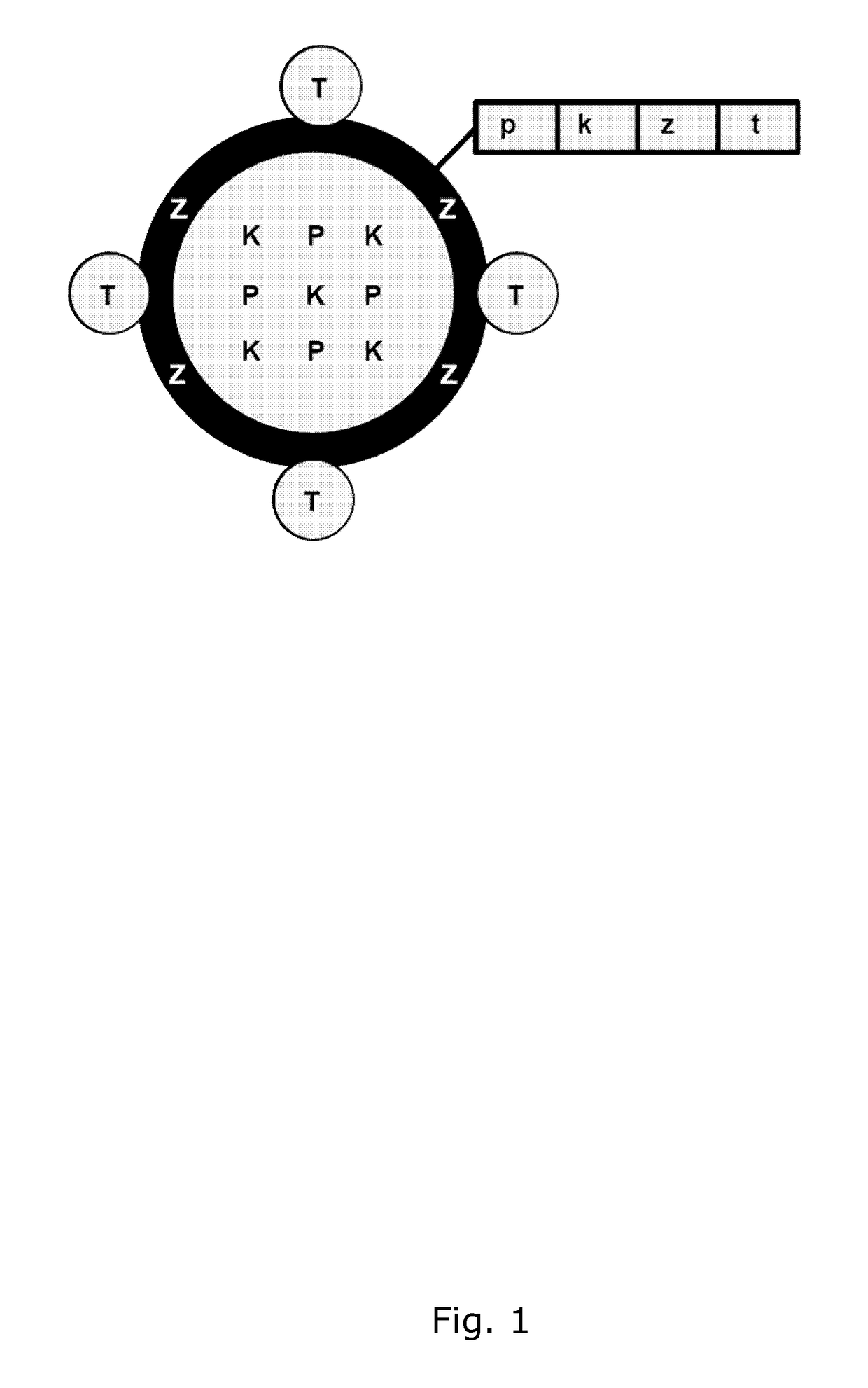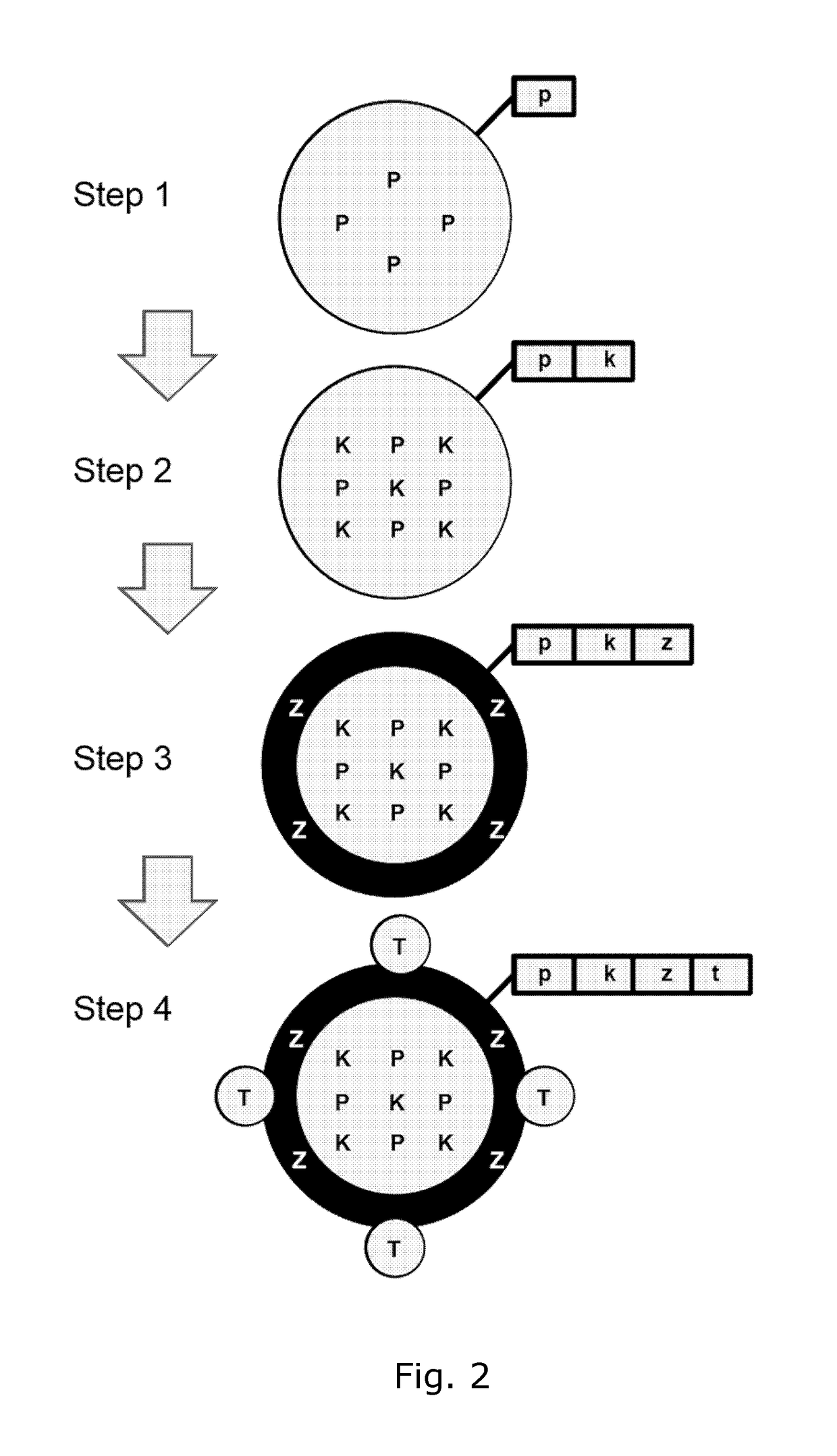High throughput optimization of content-loaded nanoparticles
a content-loaded nanoparticle, high-throughput technology, applied in the direction of peptide/protein ingredients, immunoglobulins, peptides, etc., can solve the problems of high cost of drug development, many drugs fail clinically or commercially, and the inability to optimize the particulate formulation
- Summary
- Abstract
- Description
- Claims
- Application Information
AI Technical Summary
Benefits of technology
Problems solved by technology
Method used
Image
Examples
example 1 (
E1): Stability of Tag on Particle During Sample Contact
[0329]Example summary This is an example where the purpose is to check the stability of an oligonucleotide tag on a carrier following contact with a sample. The sample is peripheral blood mononuclear cells (PBMCs), a family of cells including lymphocytes, monocytes and macrophages, all of which are essential constituents of the immune system.
[0330]The carrier and cargo is in the form of a commercially available fluorescein-containing polymer bead (Spherotech, #SVFP-0552-5, USA, Illinois). The polystyrene beads are surface modified with streptavidin through which biotinylated DNA-oligonucleotide tags are bound to the carrier. No additional surface molecules are attached to the particle.
[0331]The particles are contacted with PBMCs but no separation step is performed. The integrity of DNA-oligonucleotide tags are analyzed by qPCR using tag-specific qPCR probes.
Preparation of Sample
Collecting Sample
[0332]Blood is obtained from the D...
example 2 (
E2): Two Tagged Polystyrene Beads Comprising One Type of Carrier, One Type of Cargo and Either of Two Types of Surface Molecules
Summary of Example
[0355]This is an example where the sample was PBMCs.
[0356]The carrier and cargo was in the form of a commercially available fluorescein containing polystyrene bead (Spherotech, #SVFP-0552-5, USA, Illinois). The polystyrene beads are surface modified with streptavidin to be receptive for binding of biotinylated molecules. These streptavidin coated polystyrene beads were surface coated with either anti-CD8 or anti-CD19 antibodies, as well as biotinylated DNA-oligonucleotide tags to respectively encode the type of surface molecule i.e the antibody specificity.
[0357]The tagged molecules were contacted with PBMCs where after CD8 positive and CD19 positive cells were identified by staining with fluorochrome labeled anti-CD8 and anti-CD19 antibodies. In addition, the polystyrene beads contain fluorescein, and specific delivery to either CD8 posit...
example 3 (
E3): Tagged Liposomes Comprising One Type of Carrier, One Type of Cargo and Two Types of Surface Molecules
Example Summary
[0382]This is an example where the sample is PBMCs. The carrier and cargo is ready formed as a commercially available doxorubicin-loaded liposome. The surface molecules are biotinylated anti-CD19 and biotinylated anti-CD8 antibodies, respectively, bound to lipidated streptavidin in a 1:1 ratio. The tag is a biotin-modified oligonucleotide, which is also immobilised onto the lipidated streptavidin-antibody complex. The lipidated streptavidin-antibody-tag complex is finally grafted into the liposome carrier. The tagged molecule is contacted with PBMCs where after CD8 positive and CD19 positive cells are identified by staining with fluorochrome labeled anti-CD8 and anti-CD19 antibodies and separated by FACS. Separated fractions of CD8 positive cells and CD19 positive cells are analysed for associated oligonucleotide tags on cell-bound particles by qPCR analysis using...
PUM
| Property | Measurement | Unit |
|---|---|---|
| Force | aaaaa | aaaaa |
| Biological properties | aaaaa | aaaaa |
| Catalyst | aaaaa | aaaaa |
Abstract
Description
Claims
Application Information
 Login to View More
Login to View More - R&D
- Intellectual Property
- Life Sciences
- Materials
- Tech Scout
- Unparalleled Data Quality
- Higher Quality Content
- 60% Fewer Hallucinations
Browse by: Latest US Patents, China's latest patents, Technical Efficacy Thesaurus, Application Domain, Technology Topic, Popular Technical Reports.
© 2025 PatSnap. All rights reserved.Legal|Privacy policy|Modern Slavery Act Transparency Statement|Sitemap|About US| Contact US: help@patsnap.com



